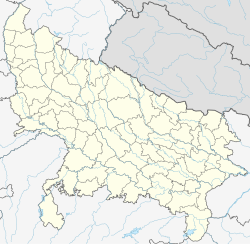This article needs additional citations for verification .(September 2018) |
Salempur City Salempur Nagar Panchayat | |
|---|---|
Town | |
| Nickname: Salempur | |
| Coordinates: 26°18′N83°55′E / 26.300°N 83.917°E | |
| Country | India |
| State | Uttar Pradesh |
| District | Deoria |
| Government | |
| • Type | District Administration |
| Area | |
• Total | 485 km2 (187 sq mi) |
| Population (2011) | |
• Total | 604,483 |
| • Density | 1,200/km2 (3,200/sq mi) |
| Languages | |
| • Official | Hindi, Bhojpuri |
| Time zone | UTC+5:30 (IST) |
| Vehicle registration | UP-52 |
| Website | deoria |
Salempur City is a Tehsil Headquarter in Deoria district under Gorakhpur Division. It constitutes as 71 Parliamentary Constituency which covers Vidhan Sabha of Salempur and Bhatpar Rani in Deoria district and Belthara Road, Sikanderpur and Bansdih of Ballia District. [1] Salempur is a Nagar Panchayat and a Block headquarter in Deoria district in the Indian state of Uttar Pradesh. [2] [3]

